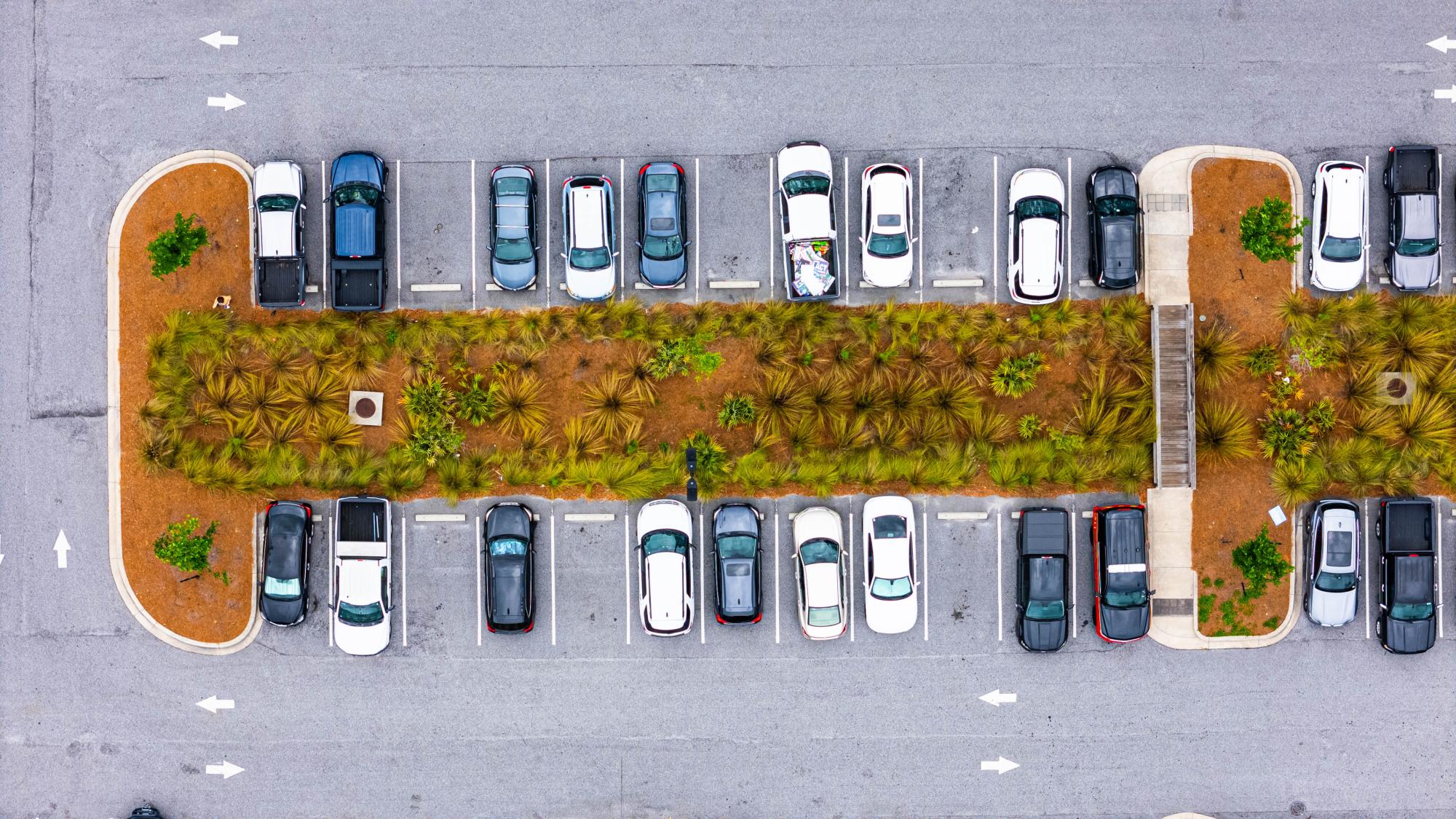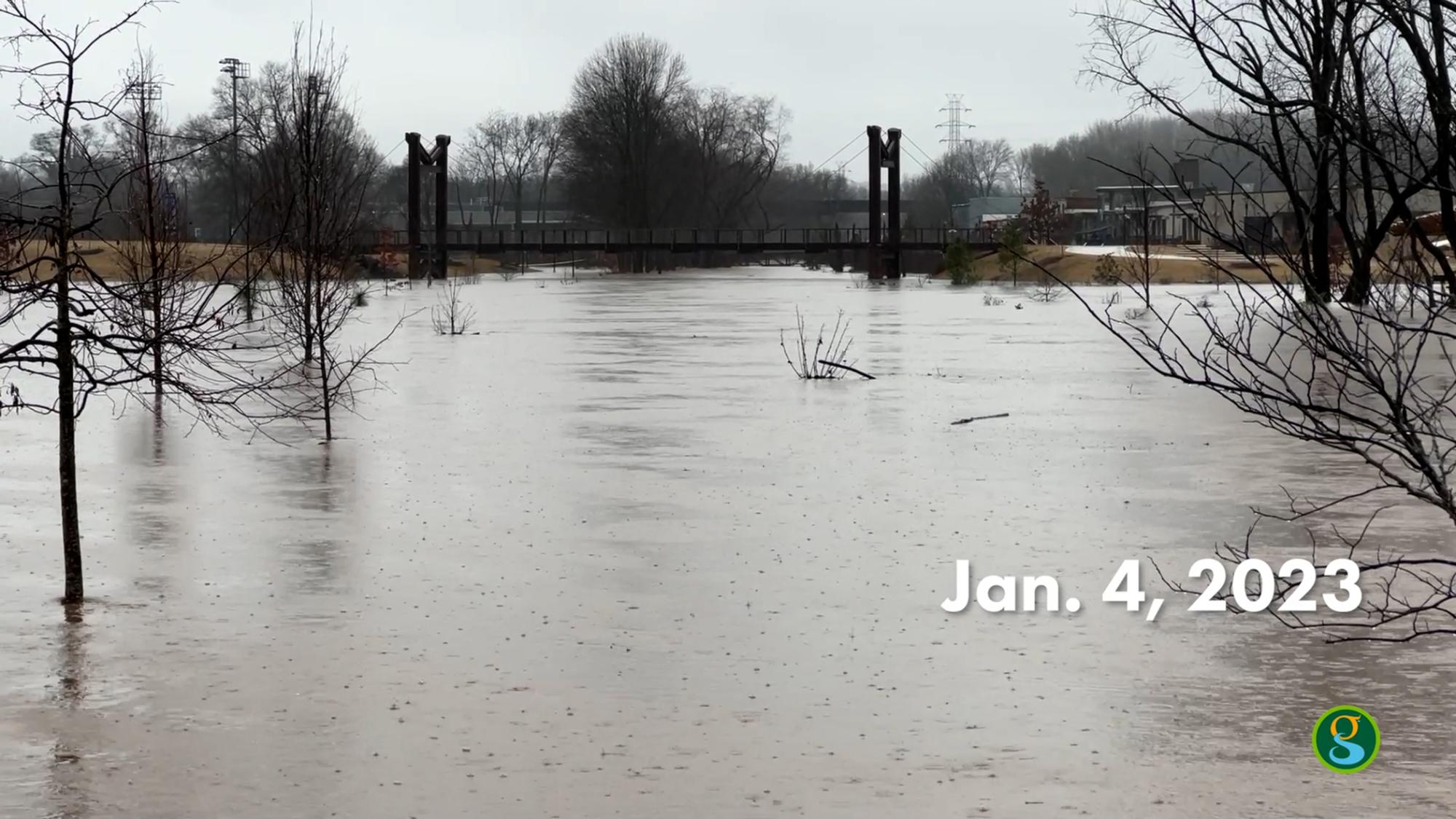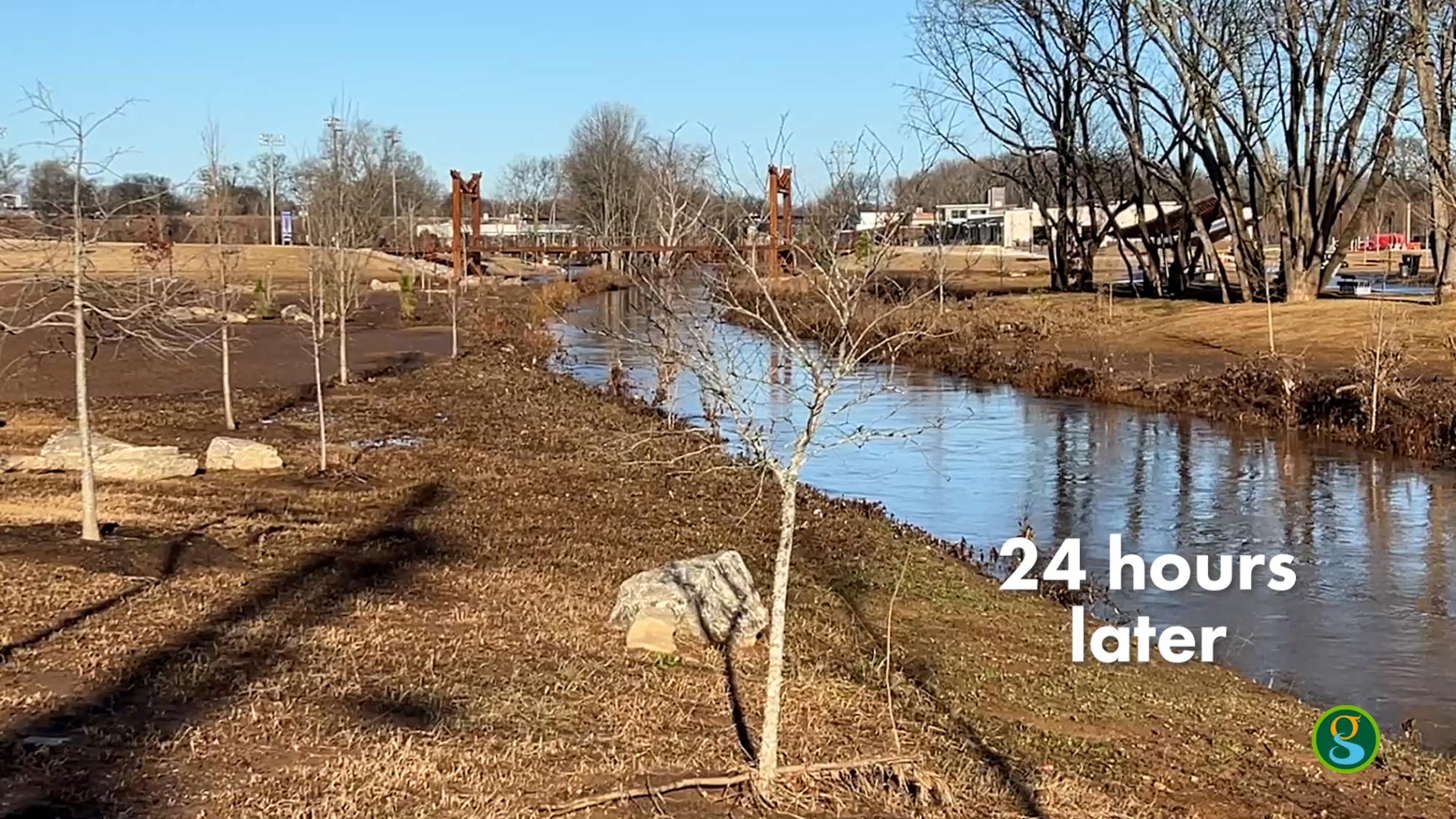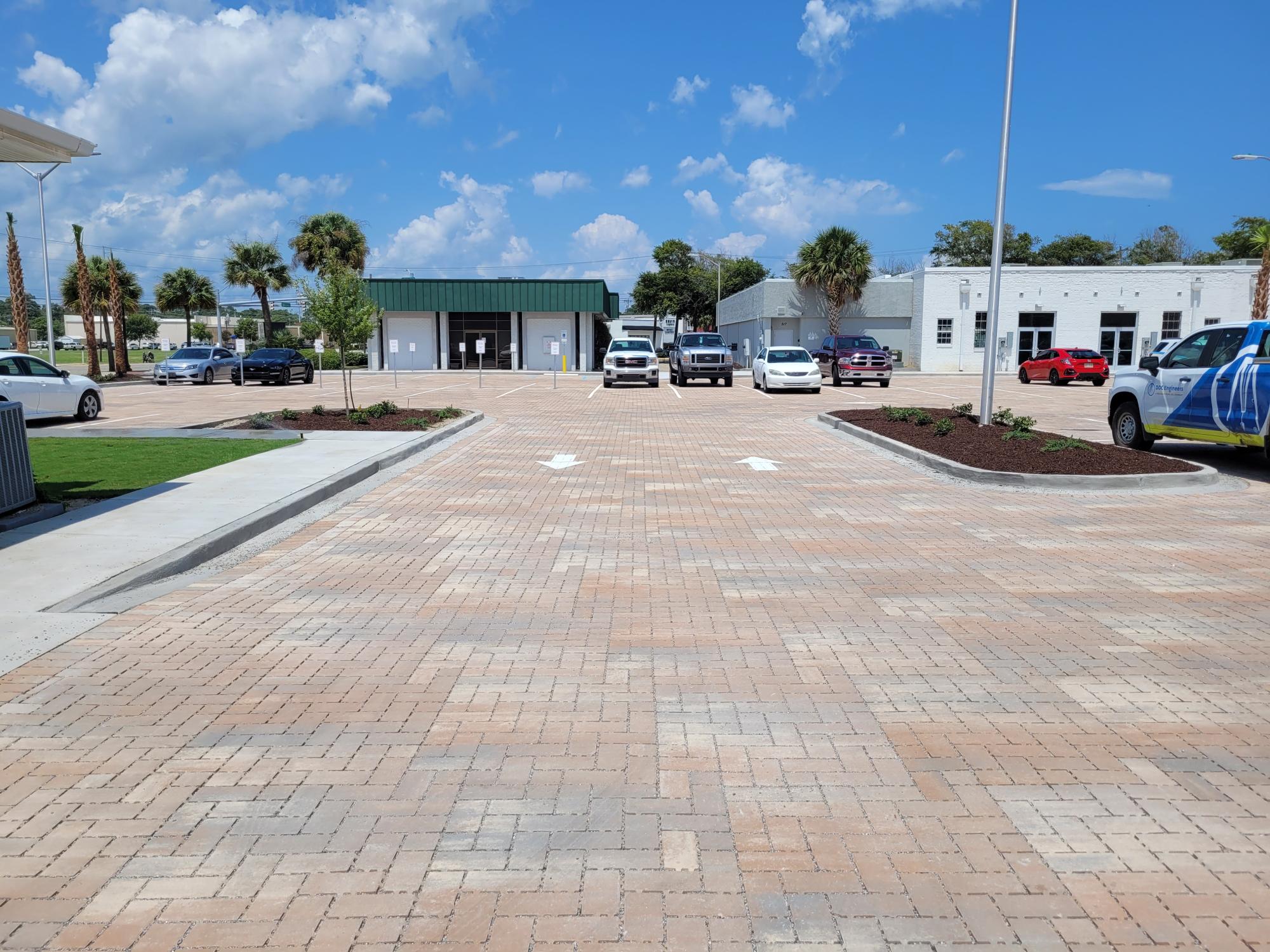The unprecedented numbers of new residents coming to South Carolina in recent years have intensified development patterns and placed greater demands on infrastructure and resources in many parts of the state.
Among the other challenges to come from all of this growth are how to maintain the health of the state’s waterways, and how to address the accelerating needs of stormwater management. Several municipalities, including the Town of Mount Pleasant, the City of Greenville and the City of Myrtle Beach, are now leading by example with sustainable approaches to flood mitigation and low-impact development.
In recent decades, the Town of Mount Pleasant has seen substantial growth, and the new developments come with the added environmental challenge of its coastal location.

Kevin Mitchell, the town’s deputy director of engineering and development services, oversees the department responsible for a revolutionary low-impact development program for all proposed new builds. Mitchell, who holds a civil engineering degree and a master’s degree in city and regional planning, has been with the town for more than 26 years.
“I think Mount Pleasant was one of the first in South Carolina to actually have a program just for site development to encourage and incentivize low-impact development techniques,” Mitchell said, explaining that floodwater is one of the many components. “There is a flooding component to it, because we are encouraging and incentivizing the reduction of impervious surfaces and the reuse of water for irrigation, those types of uses.”
The town adopted the Environmental Guidelines for Land Development, as the program is called, in 2023. Four main impact categories guide its mission: the conservation and restoration of natural water resources; the protection and improvement of ecosystem biodiversity; the improvement of community livability in areas like mobility, aesthetics and well-being; and the promotion of energy efficiency and sustainable material resources.
Mitchell said that all of the proposed new construction in the town fall under these guidelines. To date, 53 acres, or approximately 16 commercial projects, have complied with the program.
“Those are our four impact categories and that’s how our program is set up, to make sure that there is a good robust environmental site design and not just [design] solely focused on stormwater,” he said.
In the Upstate, the City of Greenville’s City Engineer, Paul Dow, explained the importance of considering waterways and floodplains when thinking about proposed development.


“I’ve been lucky that city council and city managers are on board with thinking about the waterways first — thinking about development and how it impacts the waterways, and then going from there backwards, as opposed to that being the last thing considered.”
Greenville has a robust commercial development program that engineers and designs for the mitigation of increased stormwater impacts, according to Dow. One recent example is Unity Park, which opened in 2022.
“Unity Park is entirely in a floodplain,” he said. “[We wanted] to create an example on a sunny day of what a new development could do and have a low impact example, and then on a rainy day, have an area that is resilient to flooding because flooding is inevitable in a floodplain.”
Dow explained that Unity Park is a great example of an appropriate use of a floodplain.
“When you pull in at Unity Park, there is what looks like really robust landscaping, really pretty parking medians, way wider than your typical parking lot,” he continued. “Some have zero vegetation between the car in front of you, and some have a small strip — Unity Park has a very wide strip of vegetation. Bioswales are what they are, and they take in a vast amount of water and the vegetation soaks it up, it gets filtered, and there is vegetative uptake of pollutants.”
On a larger scale, “floodplain benches” were cut out by the river at a certain elevation so that when the river rises, the water can spread out and release its energy.
“We use Unity Park as an example of a good alternative for stormwater control,” Dow said.
The City of Myrtle Beach has implemented several low-impact development practices to mitigate flooding, including the installation of bioswales, permeable pavers and other stormwater control measures.

Liudmila “Mila” Maslova, the city’s stormwater program supervisor, and her team oversee the management of the existing stormwater conveyance systems.
These include “miles of documented streams, swales, roadside ditches, closed pipe conveyances, over 40 beach outfalls, ponds and [best management practices],” Maslova said.
One example of a low-impact development practice is the grass swales installed in some of the street medians off of Kings Highway which are maintained by the Parks and Recreation Department.
Additionally, the Capital Improvements Projects team oversees a Stormwater Improvement Project and its implementation of low-impact development practices, Maslova said.
“These stormwater control measures slow down and treat the stormwater runoff from the roadways, driveways and other impervious surfaces,” she added.
Two recent examples included the installation of permeable pavers in the parking lot of the Grand Strand Brewing Company, which Maslova explained allowed for underground and surface stormwater control and storage, and in a separate project, permeable pavers installed at Charlie’s Place, a historic nightclub where the city has a vendor market and will offer business incubator units.
At the Clemson Cooperative Extension, Susan Lunt serves as the Carolina Clear coordinator and Water Resources Extension associate. She often presents on stormwater topics for the SC Association of Stormwater Managers, whose members include the staff members of municipalities and county governments.
“Our goal at Carolina Clear is to help municipalities with meeting stormwater permit requirements, and part of that is educating,” she said. “A big part of our job is educational outreach to the public, whether that’s a residential community, commercial, private – whoever it may be – to help them protect stormwater, which ultimately gets into our state waterways. That’s why it’s so important, because [this water] becomes our source drinking water, this impacts our environment, our climate, and our two largest industries: agriculture and tourism … If stormwater is not managed properly, this would have a huge economic impact on our state, so we want to protect it to be good Earth stewards, but also to help protect our economy.”
Lunt explained that “those communities that are able to contain [stormwater] with what is currently existing in the infrastructure with the roadways and then mimic what nature had done prior to having those roadways being put in, and turn that water into some sort of engineered system — such as swales, incorporating plants, different buffers — they’re going to be able to take the excess amount of water during that storm event. They’ll be able to temporarily hold it, and allow it to infiltrate. Those [communities] are where we are seeing the success … Any place that they’re able to marry these low-impact development practices in, is a wonderful bonus to the community.”
As South Carolina continues to draw people and industries to the state, the need for stormwater management, flood prevention and low-impact development practices has grown along with the population. Through sustainable building and stormwater management practices that mimic nature, municipalities are implementing more sustainable and environmentally friendly solutions to mitigate a common problem.
